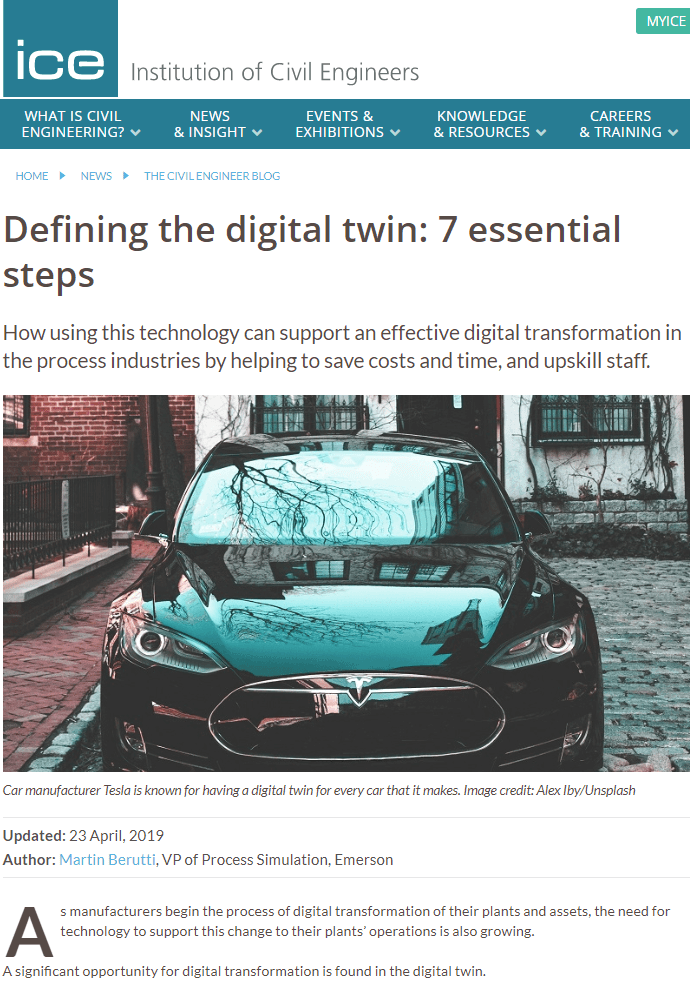 You may have heard the phrase “Digital Twin” bandied about in our world of automation. It may conjure up mental images of models, simulations, training systems, and more.
You may have heard the phrase “Digital Twin” bandied about in our world of automation. It may conjure up mental images of models, simulations, training systems, and more.
In an Institution of Civil Engineers article, Defining the digital twin: 7 essential steps, Emerson’s Mart Berutti defines digital twin with these characteristics:
- Represents assets in the physical world with a digital model
- Looks and feels like the real environment
- Simulates models forward with varying degrees of fidelity
- Is NOT just a data model. It must include relational interaction
- Connects with the relevant time data to ensure the model mirrors reality
Here are the seven essential steps that Mart shares:
- A digital twin should be a practical investment
- A digital twin should support distributed control system engineering
- A digital twin should be designed with a best-cost basis, supporting the goals of projects and processes
- A digital twin should enable safe testing of process updates and changes
- A digital twin should enable comprehensive training
- A digital twin should be an accurate digital representation of physical-world assets
- A digital twin should be easy to use
I’ll highlight a couple of points from these seven steps and invite you to read the article for more. On being a practical investment:
Organisations and projects of any size can see value by using digital twin simulation to reduce the cost and risk of improving operation and control of the plant, as well as supporting upskilling of the workforce.
Capital projects are almost always under time and budget pressures. Mart explains how distributed control system engineering improve project efficiency.
A highly accurate digital twin built on engineering data also allows a project team to perform virtual commissioning to streamline projects. Virtualising the commissioning steps can simplify factory acceptance testing (FAT), making the process more efficient and taking it off the critical path, ultimately helping ensure projects stay on schedule.
Read the article for additional points on how digital twin technology digitally transforms capital projects and ongoing operations for improved business performance. Visit the Dynamic Simulation section on Emerson.com for more on the technology and solutions available to effective implement your digital twin strategy.
You can also connect and interact with other digital twin and simulation experts in the IIoT & Digital Transformation group on Emerson Exchange 365.





